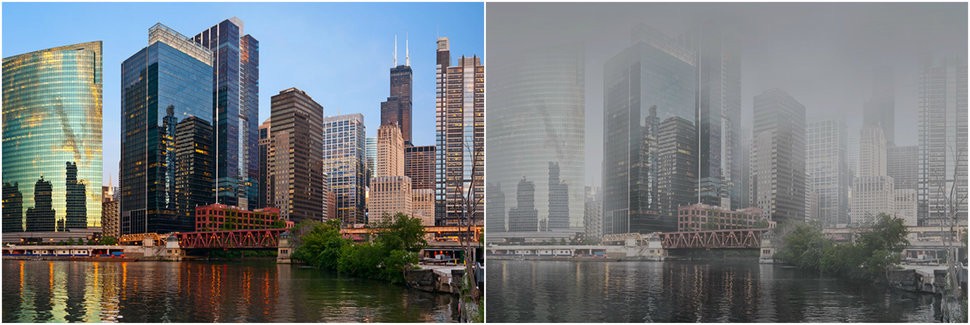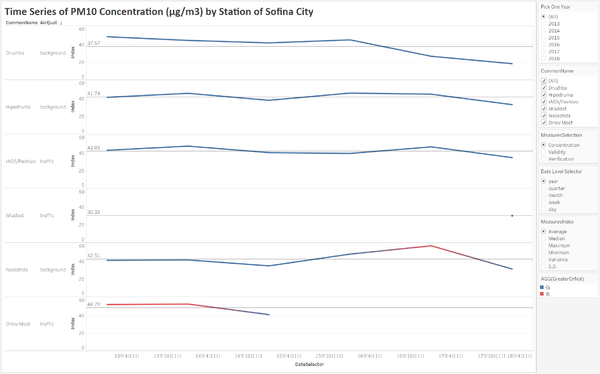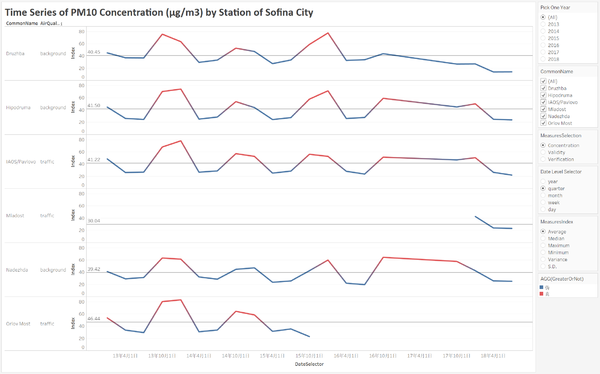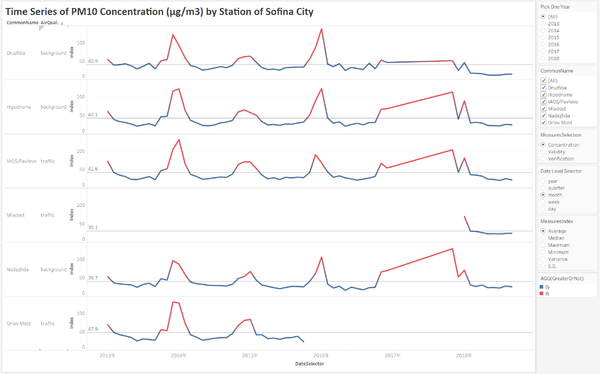ISSS608 2018-19 T1 Assign Zhang Yanli Task1
ISSS608 2018-19 T1 Assign Zhang Yanli
|
|
|
|
|
|
|
Task 1: Spatio-temporal Analysis of Official Air Quality
This dataset consists of 28 files from 2013 to 2018 and one metadata file that consists OF the latitude and longitude (using ‘AirQualityStationEoICode’ as a key to inner join all separately data file). There are 6 official air quality stations in Sofia including Druzhba, Hipodrum, IAOS/Pavlovo, Mladost, Nadezhda and Orlov Most. The six stations divided into two station types which are background and traffic.
| Patterns | Visualization |
|---|---|
| The air quality of Sofia city picks up gradually in most recent years. As can be seen from the diagram, great changes of average concentration have taken place during 2017 and 2018 from 43.96 to 29.52 . More specially, the average concentration in six stations also declines. From the diagram above, it is easy to see that there are missing data in Mladost and Orlov Most stations. For Orlov Most station, the official air quality dataset only consists of the data from 2013 to 2015. While, the dataset only consists of the data of 2018 for Mladost station. When we do the analysis, there would be some errors may occur.
|
|
| In the second quarter and third quarter of each year, the average concentration is lower than overall concentration. In the fourth quarter, the average concentration reaches peak during the whole year.
|
{ } |



